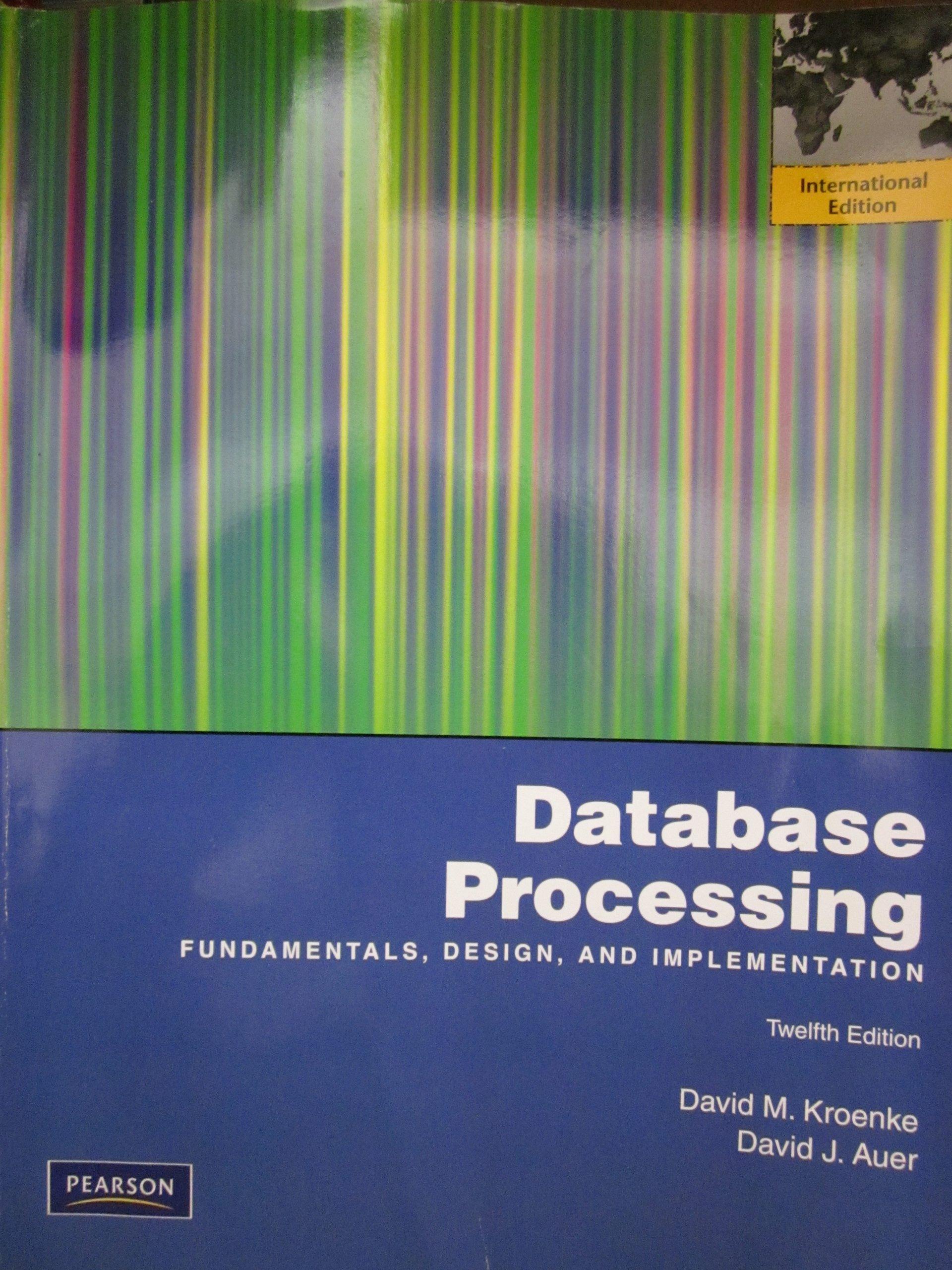Question
This exercise asks you to define some functions for manipulating linked structures. You should use the Node and TwoWayNode classes, as defined in this chapter.
This exercise asks you to define some functions for manipulating linked structures. You should use the Node and TwoWayNode classes, as defined in this chapter.
Be sure to reuse your solution from Programming Exercise 4.8 as your starter file for the testnode.py file.
In the testnode.py file, complete the following:
Complete the implementation of the insert method that inserts an item into a singly linked structure at a given position.The function expects three arguments:
item, index
position, newItem
linked structure, head
If the position is greater than or equal to the structures length, the function inserts the item at its end.
Searches for the node at position index -1 or the last position
Inserts new node after node at position index -1 or the last position
The function returns the modified linked structure.
An example call of the function, where head is a variable, is either an empty link or refers to the first node of a structure, head = insert(1, data, head).
To test your program run the main() method below in the testnode.py file.
def main(): """Tests modifications.""" head = None head = insert(0, "1", head) print("1:", end = " ") printStructure(head) head = insert(1, "2", head) print("1 2:", end = " ") printStructure(head) head = insert(0, "0", head) print("0 1 2:", end = " ") printStructure(head) head = insert(3, "3", head) print("0 1 2 3:", end = " ") printStructure(head) head = insert(1, "9", head) print("0 9 1 2 3:", end = " ") printStructure(head) if __name__ == "__main__": main() Your program's output should look like the following:
1: 1 1 2: 1 2 0 1 2: 0 1 2 0 1 2 3: 0 1 2 3 0 9 1 2 3: 0 9 1 2 3 code from previouse question:
node.py
=================================
class Node(object): def __init__(self, data, next = None): """Instantiates a Node with default next of None""" self.data = data self.next = next class TwoWayNode(Node): def __init__(self, data, previous = None, next = None): Node.__init__(self, data, next) self.previous = previous
======================================
testnode.py
======================================
from node import Node def length(head): """Returns the number of items in the linked structure referred to by head.""" probe = head count = 0 while probe != None: count += 1 probe = probe.next return count def insert(index, newItem, head): """Inserts newItem at position is the linked structure referred to by head. Returns a reference to the new structure.""" if index <= 0: # newItem goes at the head head = Node(newItem, head) else: # Search for node at position index - 1 or the last position probe = head while index > 1 and probe.next != None: probe = probe.next index -= 1 # Insert new node after node at position index - 1 # or last position probe.next = Node(newItem, probe.next) return head def pop(index, head): """Removes the item at index from the linked structure referred to by head and returns the tuple (head, item) Precondition: 0 <= index < length(head)""" # check precondition if index < 0 or index >= length(head): raise IndexError("Invalid Index!") item = None if index == 0: # remove first node item = head head = head.next else: # move to node at given index -1 in linked structure probe = head for i in range(1, index): probe = probe.next item = probe.next probe.next = item.next item.next = None return head, item.data def printStructure(head): """Prints the items in the structure referred to by head.""" probe = head while probe != None: print(probe.data, end=" ") probe = probe.next print() def main(): """Tests modifications.""" head = None head = insert(0, "1", head) print("1:", end=" ") printStructure(head) (head, item) = pop(0, head) print("1:", item, end=" ") printStructure(head) # Add five nodes to the beginning of the linked structure for count in range(1, 6): head = Node(count, head) (head, item) = pop(0, head) print("5 4 3 2 1:", item, end=" ") printStructure(head) (head, item) = pop(length(head) - 1, head) print("1 4 3 2:", item, end=" ") printStructure(head) (head, item) = pop(1, head) print("3 4 2:", item, end=" ") printStructure(head) # try and except index error and print its message try: pop(4, head) except IndexError as e: print(e.__str__()) if __name__ == "__main__": main() Step by Step Solution
There are 3 Steps involved in it
Step: 1

Get Instant Access to Expert-Tailored Solutions
See step-by-step solutions with expert insights and AI powered tools for academic success
Step: 2

Step: 3

Ace Your Homework with AI
Get the answers you need in no time with our AI-driven, step-by-step assistance
Get Started


